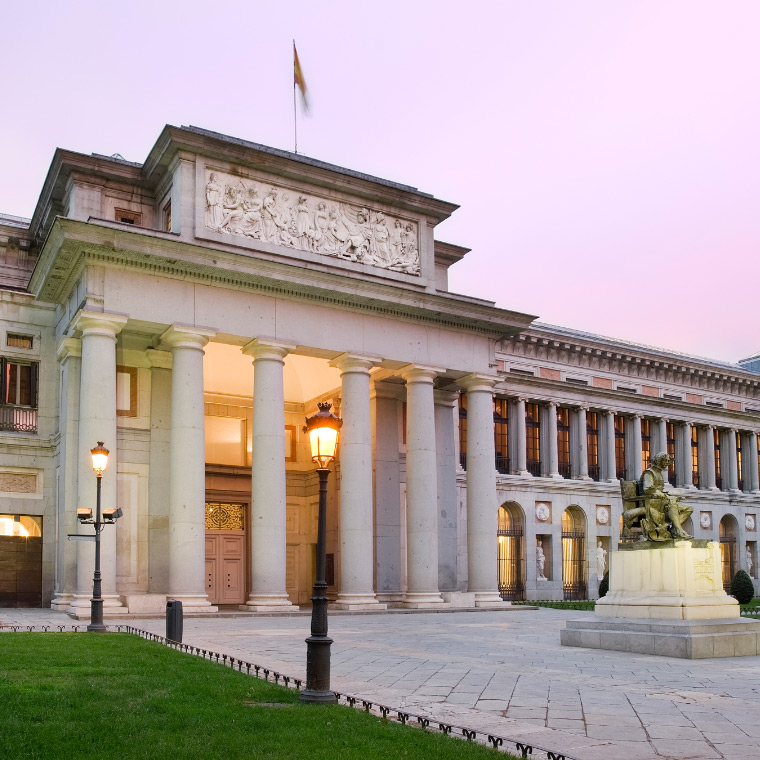49
Museo Nacional del Prado
The leading Spanish art gallery, for Madrid and for the world
What is today the Prado Museum came into being as a project of the Natural History Cabinet, entrusted by Carlos III to the architect Juan de Villanueva. This project was part of an ambitious program to promote science comprising this Cabinet, the Academy of Natural Sciences and a large Boardroom. The site was located to the north of the Botanical Gardens, between San Jerónimo and the Salón del Prado.
The works came to a halt as a result of the French Invasion in 1808. After the war, Antonio López Aguado, a prominent disciple of Villanueva, consolidated the building, but the Natural History collections were already lost and scattered, stolen by José I. Nevertheless, we had to wait until March 3, 1818, when Fernando VII, under the auspices of Isabel de Braganza, his wife, decided to move many of the paintings and sculptures from the royal palaces, including the extensive collections of Felipe IV: this was the birth of the Prado Museum as a gallery.
Since then, the museum has undergone significant changes in its collections and in its factory, in successive extensions to increase its exhibition capacity, creating two pavilions parallel to the great gallery, the construction of the staircase in its northern access, the building of small pavilions and, finally, the recent integrated expansion project by the architect Rafael Moneo, completed in 2007. Today, the complex includes the Cloister of the Jerónimos, the Casón del Buen Retiro and the Salón de Reinos.


